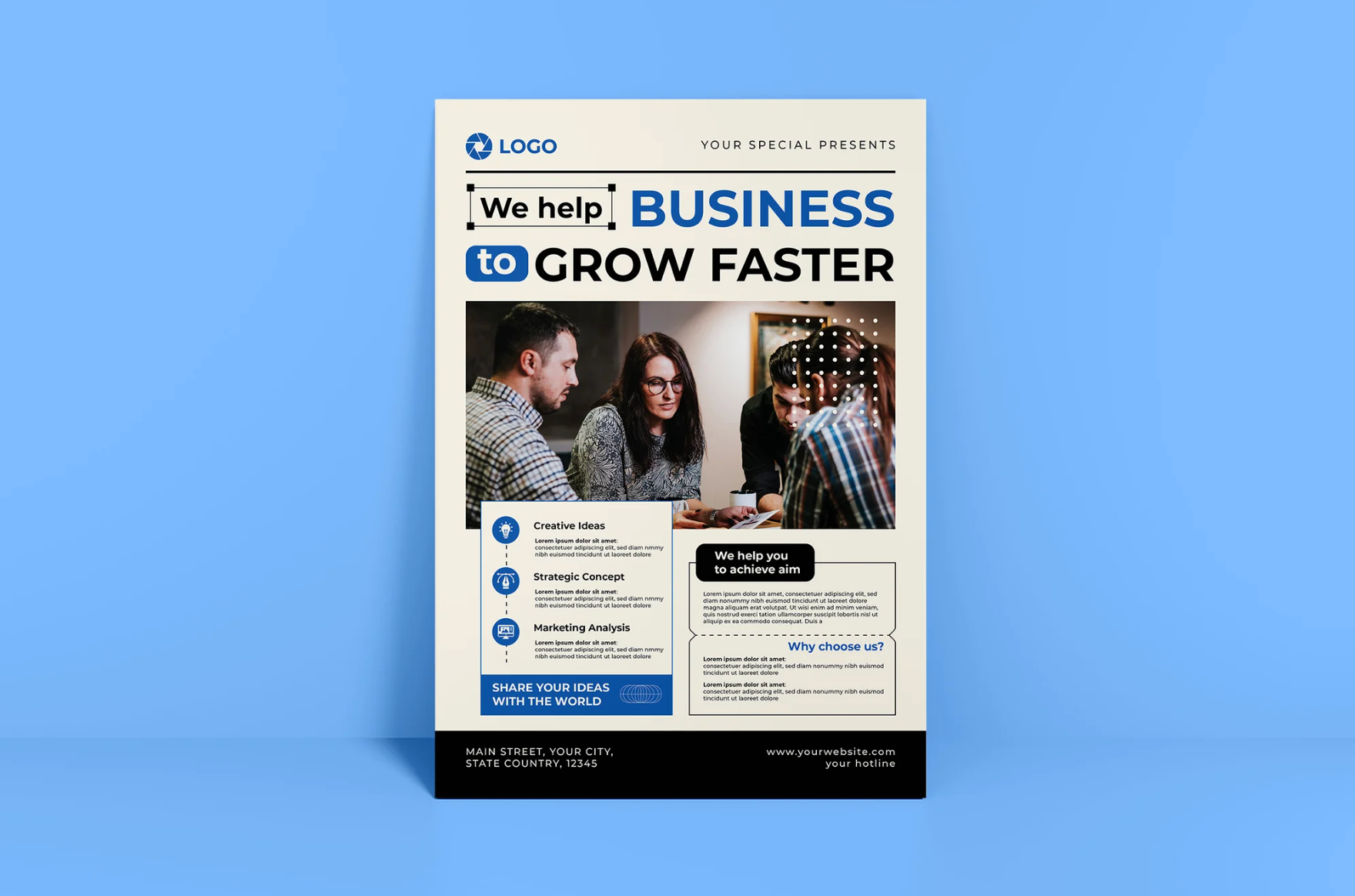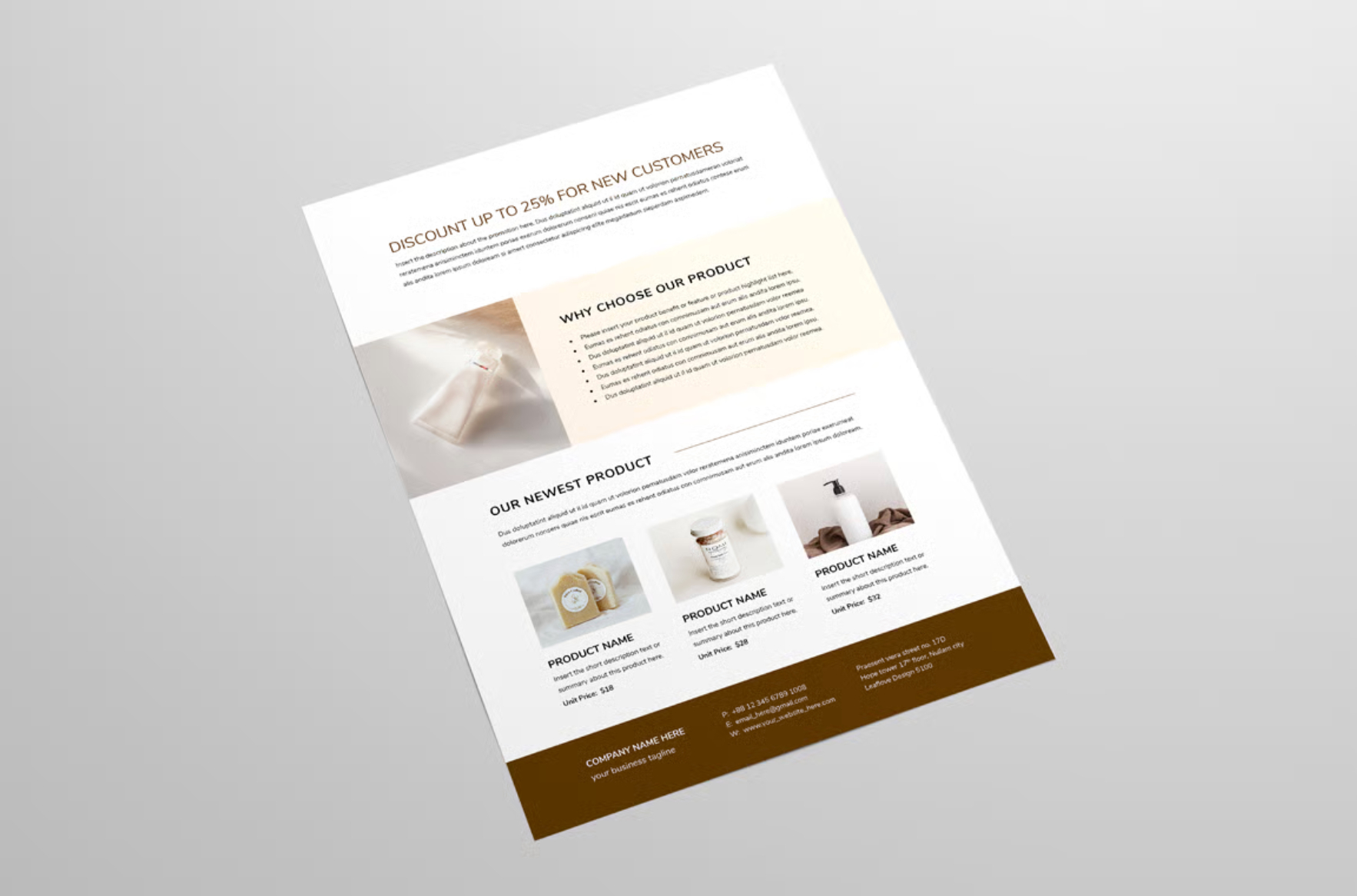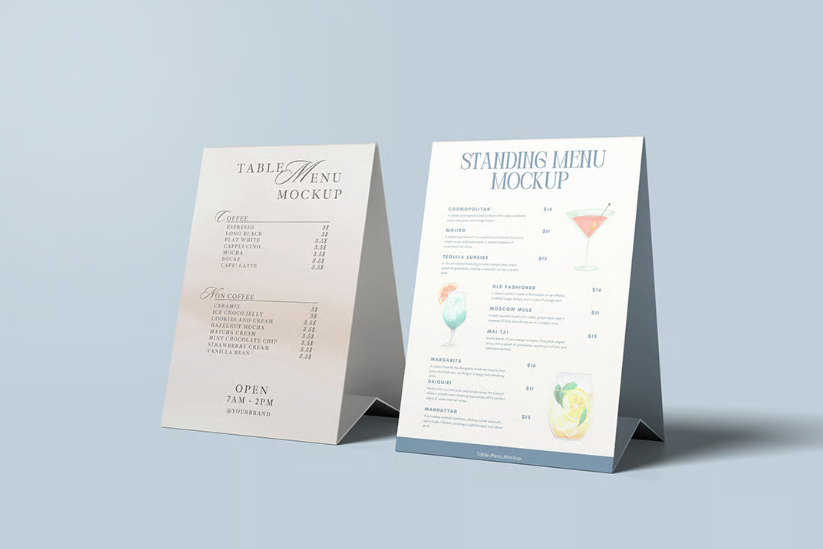Key Takeaways
- Sell sheets are one-page marketing documents that quickly communicate product value to prospects and customers.
- They combine strong visuals, persuasive copy, and clear calls to action to drive sales conversions.
- Product sell sheets focus on specific items while company sell sheets showcase the entire business.
- Important elements include professional imagery, customer focused benefits, specifications, and contact information.
- Sell sheets save time for sales teams and provide consistent messaging across departments.
- Templates and best practices help create effective sell sheets that generate leads and close deals.
Decision makers often spend less than 15 seconds reviewing sales materials, which means you don’t have long to make a strong impression. With research showing that visuals improve information retention by up to 55%, the layout and messaging of your materials are critical to your success.
A well designed sell sheet acts as a powerful elevator pitch on paper, a single page snapshot that clearly communicates your product’s value. Whether you're part of a sales team preparing for key meetings or a marketing professional looking to streamline messaging across channels, mastering the sell sheet can enhance your outreach and boost results.
Below, you’ll learn how to design effective, high impact sell sheets that grab attention, build interest, and ultimately help convert prospects into customers. From content essentials to smart distribution strategies, we’ll help you make the most of this often-overlooked marketing sales tool.
What Are Sell Sheets?
A sell sheet, also known as a one pager, is a concise, single page document that acts as a physical elevator pitch for your product or service. Unlike lengthy brochures or detailed catalogs, sell sheets provide essential product information in an easily digestible format for prospects and customers who need to make quick decisions.
These powerful marketing tools act as the first impression for many potential customers and help control your sales messaging across all departments. When time and resources are limited, sell sheets enable companies to reach hundreds of prospects efficiently while maintaining consistent brand communication.
Marketing teams distribute sell sheets to potential customers, wholesalers, and retail partners through various channels including trade shows, email campaigns, sales meetings, and digital press kits. The beauty of a well designed sell sheet lies in its ability to inform customers about key features while simultaneously working to encourage customers to take the next steps toward a purchase.
Product Sell Sheets vs Company Sell Sheets
Understanding the distinction between product sell sheets and company sell sheets helps you create the right tool for your specific business needs.
Product sell sheets highlight specific products or services with brief company mentions as supporting information. These focused documents work best for single product companies or when promoting individual items to target audiences who already understand your brand.
A successful sell sheet in this category typically includes detailed product specifications, pricing information, and clear demonstrations of how the product or service addresses specific customer problems.
Company sell sheets focus on the business itself, including mission statements, performance facts, leadership information, and comprehensive statistics about the organization. These sheets are ideal for introducing the entire business to new prospects or partners, particularly during initial relationship building phases or when seeking distribution partnerships.
Both types aim for simplicity, clarity, and sales incentive, but differ in their primary focus. Product sheets dive deep into individual offerings, while company sheets paint the broader picture of organizational capabilities and market position. Not everyone needs both types; your choice depends on your sales strategy and the industries your business serves.

What Every Effective Sell Sheet Needs
Great sell sheets contain three fundamental elements that work together to engage prospects and drive conversions. Each element serves a specific purpose in the customer journey from awareness to action, and understanding how these components interact is crucial for creating successful sell sheet examples for your business.
Balancing these fundamental elements creates a cohesive and persuasive sales tool that resonates with your target audience while maintaining clear branding throughout the customer experience.
Strong Visual Elements
High quality, full color visuals grab attention more effectively than large text blocks, especially considering that audiences typically read only 20% of text blocks over 600 words. This makes visuals crucial for capturing and maintaining prospect attention during those critical first seconds of engagement.
Product photography should show multiple angles and demonstrate actual use cases, helping customers envision how your offering fits into their specific situation. For non-physical products or services, use illustrations, data visualizations, or branded graphics that support your value proposition and create visual appeal.
Professional imagery builds credibility and helps prospects visualize the product’s value in their own context. Whether you’re showcasing a physical product photo or creating custom design elements, investing in high quality visuals pays dividends in customer engagement and conversion rates.
The strategic use of white space, color schemes, and visual hierarchy guides the reader’s eye through your content naturally, ensuring they absorb key information in the order you intend. This visual flow should complement your company logo and overall sheet design while maintaining consistency with your broader marketing materials.
Persuasive Copy and Headlines
Craft attention grabbing headlines that capture the essence of the product in a memorable way, focusing on the primary benefit rather than just its features. Your headline serves as the hook that determines whether prospects continue reading or move on to other materials.
Use customer focused copy that explains how your product benefits the buyer rather than simply listing technical specifications or company achievements. Focus on solving specific problems that your target audience faces, demonstrating a clear understanding of their pain points and business challenges.
Include an introductory paragraph that builds trust and establishes company credibility while setting the stage for the detailed information that follows. This intro paragraph should bridge the gap between the headline’s promise and the supporting evidence you’ll present throughout the rest of the sheet.
Keep all text concise and scannable for busy prospects who skim content quickly. Use bullet points, short paragraphs, and strategic formatting to make key information easily accessible. Remember that decision makers often review multiple options simultaneously, so your copy needs to communicate value efficiently and persuasively.
Clear Calls-to-Action
Every sell sheet must include a clear call to action that guides prospects to the next steps in your sales process. Without this crucial element, even highly interested prospects may not know how to purchase or learn more about your offering.
Simple CTAs, such as QR codes, website URLs, or “Start your free trial” buttons, improve conversion rates by reducing friction in the customer journey. The most effective calls to action are specific, actionable, and aligned with the prospect's position in your sales funnel.
Make contact information easily accessible by displaying phone numbers, email addresses, and website details prominently. Consider including multiple contact options to accommodate the diverse communication preferences of your customer base.
Your call to action should create a sense of urgency when appropriate while remaining professional and trustworthy. Whether you’re promoting special offers or simply inviting prospects to learn more, the CTA should feel like a natural next step rather than a high pressure sales tactic.
Designing a Sell Sheet That Converts
Maintain consistent branding throughout the sheet, using your company logo, colors, and fonts, to reinforce brand recognition and professionalism. Your sell sheet design should immediately communicate your brand identity while supporting the overall message you’re trying to convey.
Display your logo and product name prominently for clear brand identification, ensuring that prospects can easily connect your offering with your company. Use brand appropriate design elements that communicate your company’s personality and market position, whether that’s innovative technology, reliable service, or premium quality.
Keep the design to one page with cohesive visual elements that support readability rather than overwhelm the viewer. Achieve the ideal balance between visual appeal and clear messaging to engage prospects effectively, without sacrificing essential information or introducing confusion.
Consider your target audience’s preferences and industry standards when making design choices. A sell sheet for a creative agency might embrace bold, artistic elements, while one for a financial services company should prioritize clean, professional layouts that communicate stability and trust.
Product Specifications and Data
Clearly state product specifications alongside the benefits customers can expect, providing the technical details that support your value propositions. This combination of features and benefits helps prospects understand both what your product does and why it matters to their specific situation.
Support claims with hard data and statistics to prove your product’s value and differentiate it from competing solutions. Present data graphically through charts or infographics to make information digestible and memorable, especially for complex technical products or services.
Avoid overwhelming prospects with raw data; keep statistics bite sized and relevant to their primary concerns. Include pricing information, dimensions, materials, and other technical details as appropriate for your product category and customer needs.
The key is finding the right balance between providing enough information to satisfy initial questions while maintaining the scannable format that makes sell sheets effective. Too little information leaves prospects wanting more, while too much can overwhelm and confuse the core message.

Who Uses Sell Sheets and How
Sales teams use sell sheets as quick reference guides during customer presentations and calls, ensuring consistent messaging regardless of which team member is handling the prospect interaction. These tools provide confidence and credibility, especially when sales representatives need to address technical questions or competitive comparisons.
Marketing departments reference sell sheets when creating advertisements and social media content, using them as source documents for key messaging and visual elements. This ensures brand consistency across all customer touch points and reduces the time needed to develop new promotional materials.
Executives and decision makers use them to understand product positioning quickly, particularly when they need to discuss offerings outside their primary area of expertise. For companies with diverse product lines, sell sheets serve as essential reference tools for leadership communications.
Customer service teams rely on sell sheets for training and improving user experience by understanding the benefits and features they need to communicate to existing customers. This application helps ensure that post sale support aligns with the original sales promises.
Distribution partners and retailers use them to understand products they’re selling, making sell sheets crucial tools for channel partner enablement. In many cases, these partners use sell sheets directly with their own customers, thereby significantly extending your sales reach.
Benefits of Creating Sell Sheets
Sell sheets standardize product information across all departments and team members, ensuring that everyone from sales representatives to customer service staff communicates consistent messages about your offerings. This standardization reduces confusion and builds stronger brand credibility with customers who interact with multiple team members.
They empower sales teams with confidence and consistent messaging during customer interactions, providing a professional reference tool that supports both new and experienced team members. Sales representatives can focus on building relationships and addressing specific customer needs rather than struggling to remember product details or key benefits.
Sell sheets simplify sales pitches by providing key information upfront to prospects, reducing the time needed for initial product education and allowing sales conversations to focus on fit and implementation rather than basic feature explanations. This efficiency benefits both sales teams and busy prospects who appreciate concise, relevant information.
They save time for both sales teams and customers by consolidating essential details into a scannable format that addresses common questions before they’re asked. This efficiency creates an excellent opportunity for more meaningful sales conversations focused on customer-specific needs and implementation details.
Professional sell sheets enhance company credibility and support brand consistency across all customer interactions. When prospects receive polished, informative materials, they form positive impressions about your company’s professionalism and attention to detail qualities that often influence purchase decisions as much as product features themselves.
Measuring Sell Sheet Effectiveness
Track download rates and engagement metrics for digital sell sheet versions to understand which content resonates most effectively with your target audience. Use analytics tools to monitor how prospects interact with your materials and identify opportunities for improvement.
Monitor lead generation and conversion rates from sell sheet distribution campaigns to measure return on investment and optimize future efforts. Compare performance across different distribution channels to identify the most effective approaches for your specific market and customer base.
Gather feedback from sales teams about the usefulness of the sell sheet in customer interactions, as front line perspectives provide valuable insights into real world effectiveness. Sales representatives can identify which sections prospects find most compelling and which information might be missing or confusing.
Analyze customer inquiries and purchases following sell sheet distribution to understand the connection between materials and sales outcomes. This analysis helps identify the most effective selling points and messaging strategies for future materials.
A/B test different versions to optimize design elements and messaging effectiveness, experimenting with different headlines, images, or calls to action to improve performance continuously. Even small improvements in conversion rates can generate significant business impact when compounded over time.
Turn Your Message Into Momentum
When decision makers have limited time and countless options, a well crafted sell sheet becomes a powerful tool for standing out. Designed with purpose through compelling visuals, clear messaging, and a strong call to action it helps capture attention, build trust, and drive conversions.
Whether you’re highlighting a product or presenting your company to new prospects, sell sheets equip your team with consistent, impactful communication that supports every stage of the customer journey.
At Print Cartel, we’re here to help you bring that vision to life with expertly printed materials that leave a lasting impression.




